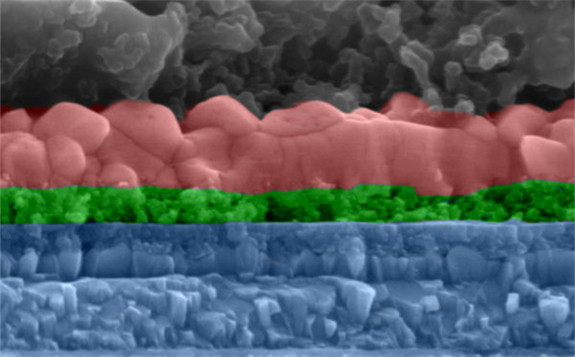Scientists at Rice University in the United States have found by strategically adding indium to an all-inorganic, lead-based perovskite, they can reduce the number of defects in the material and improve its efficiency, as well as providing a significant boost to stability.
As perovskite solar cells move rapidly toward commercial production, questions about their long-term stability and heat and moisture sensitivity linger.
While all-organic perovskites have trailed organic-inorganic alternatives, the technology has shown plenty of potential – particularly in terms of overcoming stability issues – and remains an active area of interest for researchers. A group at Rice University has discovered, by replacing some of the lead in an inorganic perovskite with indium they were able to increase the material’s stability whilst maintaining efficiency.
The group’s experiments, described in a paper published in Advanced Materials, took an inorganic perovskite – cesium lead iodide – and found that through defect engineering involving the strategic addition of indium and bromine to the material, they were able to greatly suppress the concentration of imperfections.
The small cells created by the group demonstrated maximum efficiency of 12.04% and an open circuit voltage of 1.2 V. More importantly, according to the Rice team, the cells could be prepared in ambient conditions and encapsulated versions remained stable for more than two months in air, noting that previously the cells had only lasted for a few days.

“Engineers are developing capping layers and things to protect those precious, sensitive materials from the environment,” said Jun Lou, a materials scientist at Rice University. “But it’s hard to make a difference with the intrinsically unstable materials themselves. That’s why we set out to do something different.”
The group estimates, with further optimizations the same material could achieve efficiencies of around 20%. “If we can get there, this can be a commercial product,” said Jia Liang, the paper’s lead author. “It has advantages over silicon-based solar cells because synthesis is very cheap – it’s solution-based and easy to scale up. Basically, you just spread it on a substrate, let it dry out and you have your solar cell.”